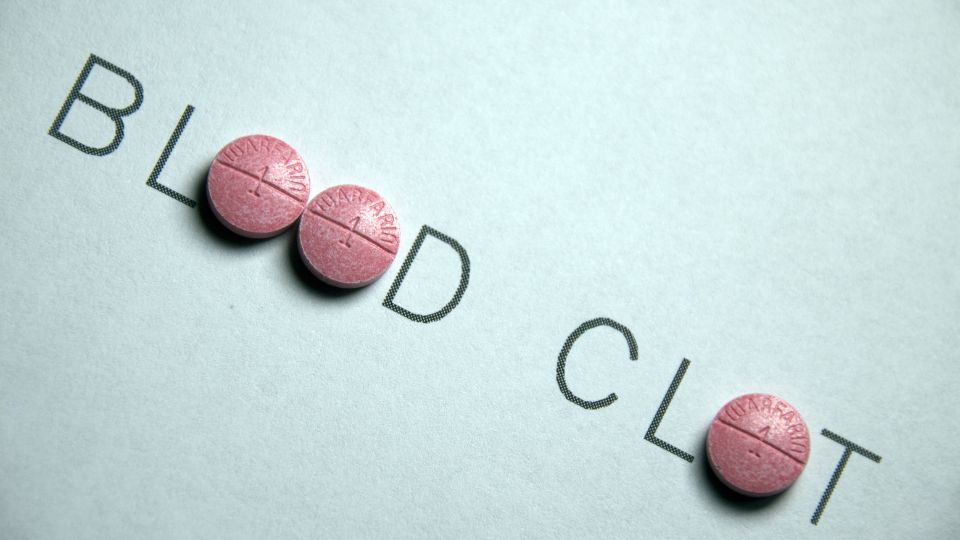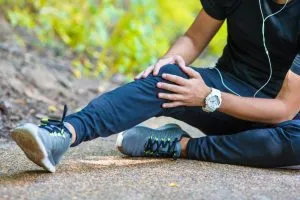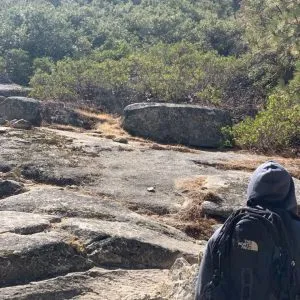Can Hiking Cause Blood Clots? (Answered)

Blood clots, or what is scientifically known as a thrombus, are gelatinous masses of blood cells formed by the coagulation of blood. This gelatinous blood can sometimes develop in your veins, which can cause a host of medical issues such as stroke, heart attack, organ damage, or even death.
If you have a history of blood clots, you might wonder how they might affect your ability to enjoy your hiking adventures. Or, if you don’t have a history of blood clots, you may be wondering if hiking could potentially increase your risk of developing blood clots.
Let’s dive in.
Quick Links
What Causes Blood Clots?
When your body experiences an injury such as a cut, it reacts by clotting the wound, which is natural and typically shouldn’t cause major problems. Blood clots become an issue when they form without an obvious trigger, such as a cut on an injury. Factors that may increase your risk of developing blood clots include:
- Serious physical trauma
- Sitting for too long (sedentary lifestyle)
- Pregnancy
- Obesity
- Being over the age of 60
- A family history of blood clots
- Smoking
Does Strenuous Hiking Cause Blood Clots?
Hiking on its own isn’t going to cause blood clots. However, hiking highly complicated trails frequently can increase your risk of developing blood clots. There is research to suggest those who participate in regular rigorous physical activity, such as serious athletes, have a higher risk of developing deep vein thrombosis.
Why is this? When you exercise heavily, your body is under increased physiological stress or physical trauma. This raises your heart rate and blood pressure while also increasing the viscosity of your blood. If you combine this with a lack of movement when descending trails or after completing a very strenuous hike, it could increase the risk of developing blood clots in the legs.
While we may think of physical trauma as something like a broken bone or a deep gash -strenuous physical activities such as weight lifting or long-distance running can constitute physical trauma due to the great amount of stress your body goes through.
Can Hiking at High Altitudes Cause Blood Clots?
Studies have shown that hiking at high altitudes can put you at a higher risk of developing blood clots. This is because the air pressure at higher altitudes is lower, which can cause a decrease in oxygen levels. This can lead to the narrowing of your veins, as well as an increase in the viscosity of your blood.
As with strenuous hiking activities, it’s important to remember that hiking at higher altitudes isn’t necessarily going to cause you to develop blood clots. However, if you have a history of developing them or any of the risk factors listed above, it’s best to take preventative measures such as moving around frequently during your hike and drinking plenty of water.
Overall, hiking on its own is unlikely to cause blood clots – however, if you engage in strenuous hiking activities or hike at high altitudes, it’s important to be aware of the potential risks. Taking preventative measures such as taking frequent breaks and drinking plenty of water can help reduce your risk. Let’s get into the preventative measures you can take.
How To Prevent Blood Clots While Hiking
Wear loose-fitting clothing
Wearing clothes that are too tight can cut off the proper blood circulation in your body, which can contribute to the occurrence of blood clots. To lower your risk of blood clots, switch out your tight athletic pants for a pair of cozy, spacious sweatpants.
Wear special compression stockings
Compression stockings or compression socks are specially made for those who have experienced blood clots or are looking to prevent them. They look a lot like a regular pair of stockings or pantyhose, except that they are made of different materials and serve different purposes. Compression stockings are tighter around the ankles, legs, and thighs, which helps to push fluid up the legs and encourages better circulation to the heart.
Try to stay active
There are plenty of studies that show staying active can help to improve and prevent symptoms of blood clotting. Participating in gentle physical activity, such as a gentle hike rather than rigorous scrambles is going to be the best way to ensure that blood clots do not occur.
Raise Your Legs 6 Inches Above Your heart
When you’re sitting or lying down, rest your feet on a stack of books or pillows that is at least 6 inches high. This elevation will help to improve blood flow, reduce swelling brought on by blood clots, and will help in lowering your blood pressure.
What Relieves Blood Clots?
There are a few things that can actually help to relieve the symptoms of blood clots; here are some of the best methods:
Medication
If you experience blood clots, the most effective way to get rid of them is going to be medication prescribed by your doctor. The two main medications that are used to treat and prevent blood clots are heparin and enoxaparin, which are better known as blood thinners.
Surgery
In more extreme cases of blood clotting, invasive measures may be necessary. This method, which is known as a thrombectomy, involves your doctor making an incision into the blood vessel, removing it, and repairing the vein.
Compression stockings
These garments are a great way to prevent and relieve the symptoms of blood clots. If you have a more mild case of blood clots, these stockings, in addition to medication prescribed by your doctor, are going to be your best bet in preventing further clotting.
Conclusion
Going hiking regularly is a great way to stay active. However, if you frequently hike complicated, high-altitude trails that require a lot out of your body, you can potentially put yourself at a higher risk of developing blood clots.
If you find yourself still itching to get out on the trails after an occurrence of blood clots, opt for low-altitude, low-stress trails. Also, opt to wear a compression stocking on the trails to prevent the development of another blood clot.







